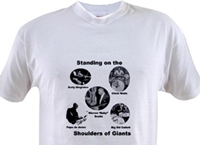
What makes this album so important? Brubeck abandoned 4/4 time and made an album employing a number of different time signatures. Two highly recognizable tracks are Take Five in 5/4 time and Blue Rondo a la Turk in 9/8. Here those songs are for the five people on the planet who has not yet heard them:
Blue Rondo a la Turk is 2+2+2+3 if you are mentally trying to fit it into 3+3+3. Also, Paul Desmond's solo is in 4/4. Today we can figure this out, but I can assure you this was heady stuff in 1959. Among the reasons is it is one thing to compose something in 9/8 (or 5/4, or any of the non-standard time signatures on the album), then go into a studio and play it. A lot of jazz musicians had the chops to do that. However, try improvising on 9/8! That is where this album shook things up.
How about influence? It goes without saying that every jazz musician was influenced. But listen to Kathy's Waltz, then listen to the Beatle' All My Loving'. Hmmmmm, right? This 'gotcha' moment was spotted by Spencer Leigh and documented in his July 8, 2010 article in The Independent titled When it comes to songwriting, there's a fine line between inspiration and plagiarism.
Let's play Kathy's Waltz:
If you are wondering which track is my favorite, it's:
I discussed the Quartet, Joe Morello and Joe Dodge (Morello's predecessor) in this April 11, 2010 post. That is a good starting point for digging beyond this album. But for now I am going to continue on topic and provide this clip of Dave Brubeck discussing Time Out:
Here is one final link regarding Dave Brubeck and the album (from the Library of Congress): Time Out for Dave Brubeck. The closing two videos are the Quartet in action - playing and improvising in off time signatures. Enjoy:
If you do not own the album I recommend going first class and getting Time Out Legacy Edition, which includes two CDs and a DVD. My next post will discuss the third of the four albums: Ah Um by Charles Mingus.



No comments:
Post a Comment